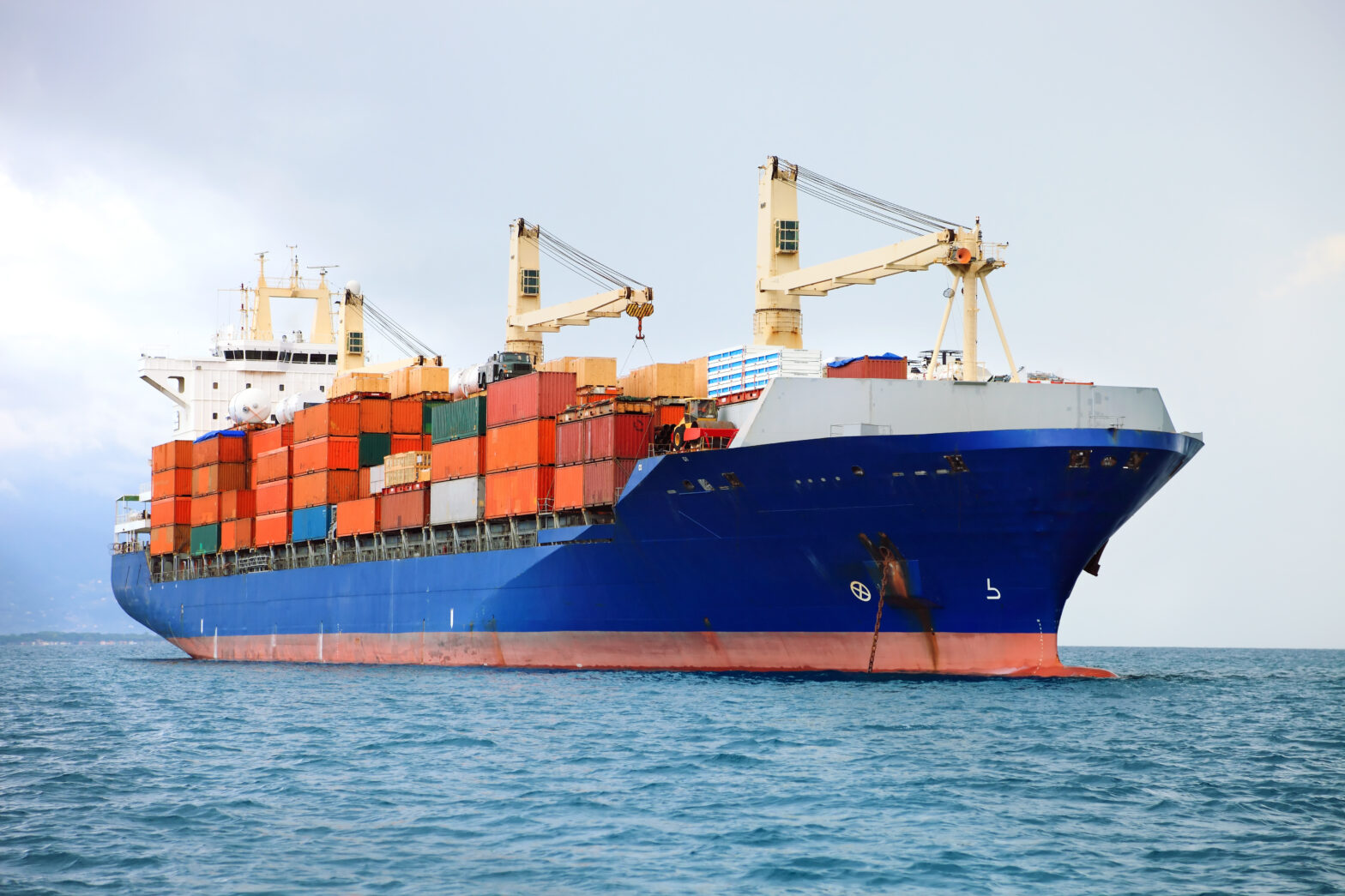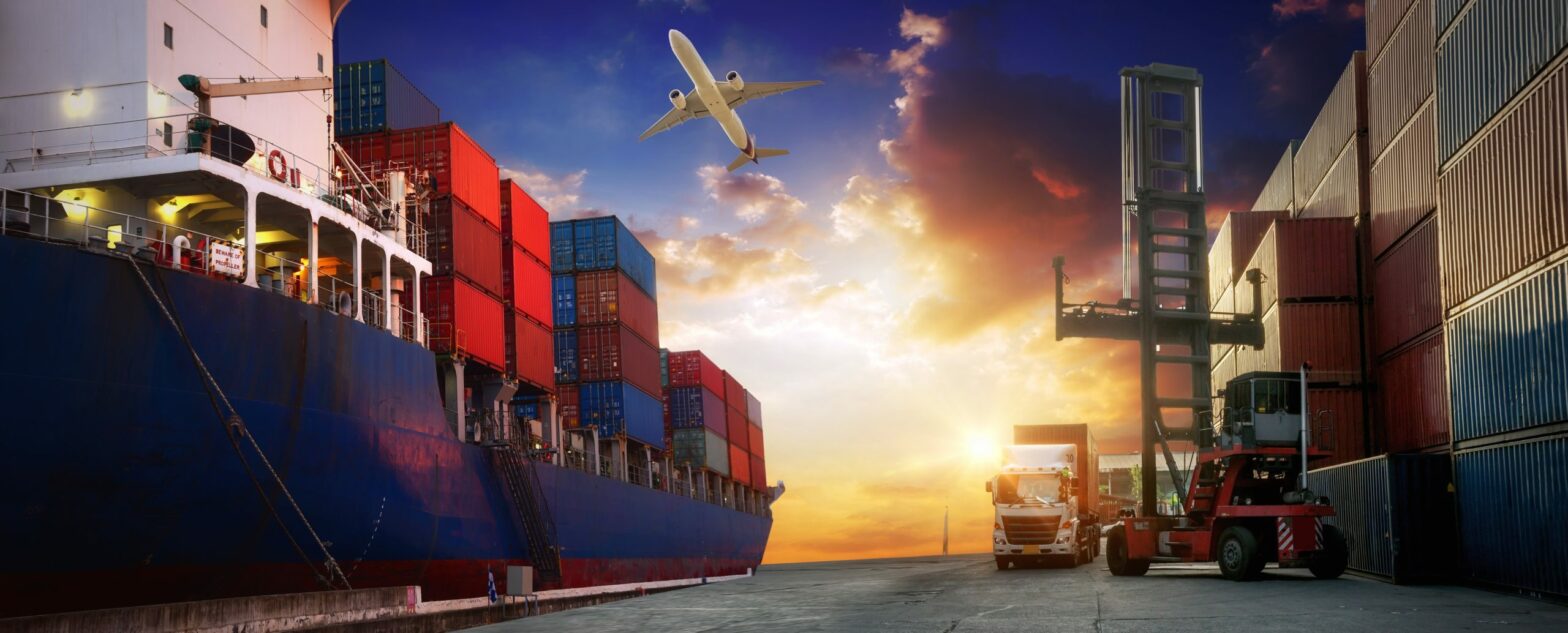If you’re thinking of starting to import or export goods to the UK, you’ll need to compare your options for both sea freight and other methods of shipping. Sea freight is a great choice for large quantities of consumer goods – and is often used when importing from manufacturers based in the Far East.
Since 2012, the costs of sea freight have fallen significantly, and the space available on cargo ships is expected to exceed the demand for shipping until 2022. Exporting using sea freight is likely to remain a popular and cost effective option for some years to come.
Here’s what you need to know about using sea freight for supplier shipments, to help you decide if it’s right for your business.
What is sea freight?
Sea freight is a common method of transporting goods across the world using large cargo ships. There are a number of different forms of sea freight, including:
- Full container load (FCL) in which a single shipment is loaded into a container which might be from 20 – 45 feet long
- Less than container load (LCL) where several shipments share a container and are split at their destination
- Roll on roll off (RORO) in which lorries and other vehicles drive onto the ship with their cargo, are safely secured for the journey, and then simply drive off at their destination
- Dry bulk shipping, used for commodities such as metals or aggregates, which can be dropped or poured into the hold of a ship rather than being loaded on in containers.
What are the advantages of sea freight?
Sea freight is a popular method of importing and exporting goods and commodities, particularly consumer goods moving long distances. It has a number of advantages:
- Cost effective method of shipping for heavy or large loads, some 4-6 times cheaper than air freight on average
- Duty and VAT can also be less expensive when using sea freight compared to air freight, because it’s calculated as a percentage cost of the cost of goods plus the export cost
- Several different shipping options, as outlined above, including taking an entire container, or sharing one between several different loads
- You can ship bigger items such as furniture, and even vehicles by sea
- Specialist operators can ship goods from more or less anywhere in the world using sea freight
- Sea freight is typically more environmentally sound than air freight.
What are the disadvantages of sea freight?
Sea freight does have a few downsides which make it unsuitable in some cases:
- Time consuming – it can take several weeks to move goods using sea freight
- The pricing structure makes it less suited to small loads, which can sometimes be more cost effectively sent by air or using a courier
- Sea freight is more prone to damage during transit compared to air freight – although in reality it’s highly unlikely that entire containers will be lost overboard or seized by pirates.
If sea freight isn’t right for you, you might consider using air freight instead. Check out our helpful guide for more information about sending goods by air, so you know your options.
Sea freight costs – what can you expect to pay for?
When you’re importing by sea freight you need to think about a few things – there’s naturally the cost of goods and the amount charged by the shipping company to move them. But then there’s also the charges added for duties and taxes, as the goods pass through customs processes on their way to the UK.
Some of the costs of importing using sea freight depend on where your goods are coming from. Importing from within the EU for example, typically incurs lower costs as there shouldn’t be import duty to pay.
Shipping costs vary significantly depending on what you’re moving and where. You can get a good idea of the range of costs from different providers, using a freight calculator – there’s one linked in the source section below for reference.
Here are some examples of the average market rate, for sending a 40ft container of low value clothing to the UK from different origin ports:
- From Malaga, Spain – USD 1100 – 1200
- From Qingdao, China – USD 1900-2100
- From Bangladesh – USD 2200 – 2500
- From Veracruz, Mexico – USD 2000 – 2200
- From Sydney, Australia – USD 2600 – 2900.
However, the shipping itself isn’t the only cost you need to know. You’ll need to take into consideration the following when you’re working out the cost of your sea freight shipment:
- Cost of goods
- Cost of shipping
- UK import duty if relevant – calculated as a percentage of cost of goods + cost of shipping
- UK VAT – calculated as 20 per cent of cost of goods + cost of shipping + cost of import duty.
In some cases you might be able to reclaim the cost of VAT paid for your shipment. You might also notice that your cost of shipping is broken down into several charges, including port authority costs, routing fees if your shipment is going through a fee-paid channel like the Panama Canal, and surcharges if there are any hazardous goods to handle.
Tip: It can be expensive to move goods around the world. As a business, you’ll want to protect your profit margin. While you can’t avoid paying your legal dues such as import duty or VAT, you can make sure you’re not hit by high bank fees when paying suppliers based overseas. Even if the bank advertise low fees, they often add a markup to the exchange rate, which means you end up paying more.
A great option for many businesses working internationally is to use a service that specialises in international money transfers, such as TransferWise, to pay international invoices.
TransferWise is a multi-currency borderless account that lets you send money with the best available exchange rate. All you’ll pay is a low upfront fee. There are no hidden fees. It’s great if you’re paying international suppliers frequently.
How sea freight works
It’s common for companies to use a specialist in shipping to arrange their sea freight, and have their goods moved from the supplier safely and legally. This is helpful because import and customs processes are complex. Mistakes can be costly, so having a shipping agent involved is an effective way of managing the risks and ensuring the process goes smoothly.
Here are the general steps you’ll need to take to arrange a sea freight shipment:
- Choose a shipping company, and agree a quote for the service you require
- The shipping company will collect the goods from your supplier
- Your shipment is moved to the port, and passes through customs at the point of origin
- Goods are loaded into their own container (FCL), or a shared container (LCL), and then put onto a cargo ship for their journey
- On arrival in the UK, the goods have to pass customs again – usually arranged by the shipping agent – and will be released when all duty and taxes are paid
- The goods are delivered to you – either in their container if they were shipped FCL, or on pallets if shipped LCL
How long does sea freight take?
Sea freight takes much longer than moving goods by air. You’ll need to take into account the time it’ll take to get goods to the port at their point of origin, time to clear customs both at their origin and the UK, as well as time on the water.
Your shipping company will be able to give you a good idea of how long it’ll take to get your sea freight shipment. However, you should bear in mind that there are a number of issues which can cause delays. From a supplier missing a port delivery time, to poor weather, to challenges with local haulage or customs procedures, your freight could be caught up in delays which are out of your control. If you’re on a strict deadline you’ll need to plan ahead and arrange your shipment well in advance.
You’re advised to allow a week at either end to clear customs, plus actual shipping time. Here is a rough guide to the length of time required for some common routes to the UK:
- Southern China – 23 to 25 days
- Northern China – 32 to 35 days
- Australia – 40 to 50 days
- India – 19 to 22 days
- USA East Coast – 10 to 14 days
- USA West Coast – 30 days
Sea cargo
Your shipping agent will be able to confirm whether or not sea freight is a good match to your needs. However, as a rule of thumb, shipments weighing over 100kg, or including multiple cartons, are usually suited to sea freight.
There are far fewer restrictions about what can be moved using sea freight compared to air freight. However, it’s important that your cargo is properly labelled and described so that it’s transported in the most appropriate way. Any dangerous goods for example, may need to be moved under different conditions, while perishable or fragile items will be transported in the most suitable containers. You can even ship frozen or refrigerated items, or commodities like sugar which must be kept entirely dry during shipping.
Sea freight quote
You can get a quote either by talking directly to a shipping agent – see some of the largest shipping companies listed below – or getting some examples from a sea freight quote comparison tool such as this one.
You’ll need to give some information to the shipping company to calculate the potential costs, such as:
- Origin and destination of shipment
- Dimensions and weight of each pallet or box, and the total number of items to be shipped – or else the number and size of container for FCL shipments
- Type of product to be shipped.
Sea freight companies
Here are some of the largest sea freight companies in the world to help you research and get quotes for your shipment:
- Kuehne + Nagel, the world leader in terms of volume of freight
- DHL Global Forwarding – less well known than their package delivery and courier services, DHL also offers sea freight
- DB Schenker is based in Germany, offering a full range of sea freight shipment services
Sea freight tracking
Sea freight is tracked by shipping companies, ports and other authorities as it moves to its destination. A container will be tracked and a record made every time it is moved from a truck into a port area, to a cargo ship, and so on. Both electronic and manual tracking is used to keep this global inventory up to speed.
It’s in everyone’s interests to keep a close eye on the movement of goods – shipping companies have duties to their customers, ports can charge for containers kept in their premises for too long, and customs authorities want to know exactly what is going in and out of the country for the purposes of duty and tax payments. This results in a reasonably slick and reliable tracking system for sea freight.
Getting your sea freight shipment arranged shouldn’t be too tricky as long as you choose a reputable shipping company. You’ll need to plan in advance, because the timelines can be long, and a shipment could hit delays for a number of reasons. However, sea freight remains a cheap and reliable way of moving goods round the world, well suited to many types of business.





